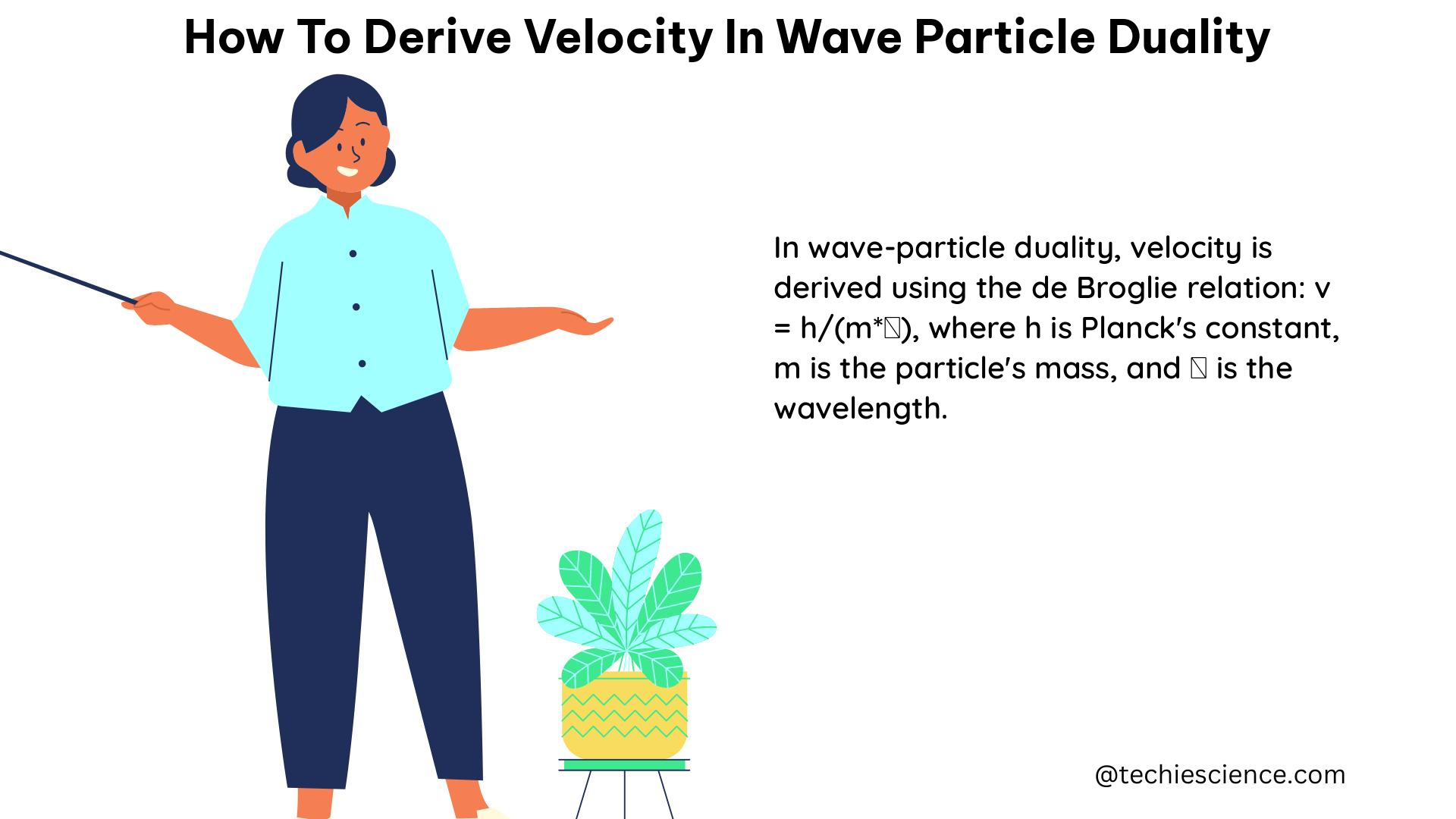The wave-particle duality is a fundamental concept in quantum mechanics that describes the dual nature of particles, where they exhibit both wave-like and particle-like properties. To derive the velocity in this duality, we can start with the de Broglie postulate and the wave equation.
Understanding de Broglie’s Postulate
According to de Broglie’s postulate, the wavelength of a particle is given by the equation:
λ = h/p
Where:
– λ is the wavelength of the particle
– h is Planck’s constant
– p is the momentum of the particle
This equation establishes the relationship between the particle’s wavelength and its momentum.
Calculating the Wave Velocity (vp)

The frequency of the wave associated with the particle is given by:
f = E/h
Where:
– f is the frequency of the wave
– E is the energy of the particle
– h is Planck’s constant
Using the wave equation, the velocity of the wave (vp) can be calculated as:
vp = fλ
vp = (E/h) * (h/p)
vp = E/p
This equation shows that the wave velocity (vp) is directly proportional to the energy (E) of the particle and inversely proportional to its momentum (p).
Relating Velocity to Relativistic Energy-Momentum
The energy of a particle can be related to its mass and velocity using the relativistic energy-momentum relation:
E^2 = (mc^2)^2 + (pc)^2
Where:
– E is the energy of the particle
– m is the rest mass of the particle
– c is the speed of light
– p is the momentum of the particle
Substituting this relation into the equation for vp, we get:
vp = c^2 * p / E
vp = c^2 * p / √[(mc^2)^2 + (pc)^2]
This equation gives the wave velocity (vp) in terms of the particle’s mass, momentum, and the speed of light.
Velocity of Massless Particles (Photons)
For a massless particle, such as a photon, the energy is given by:
E = hf
Where:
– E is the energy of the photon
– h is Planck’s constant
– f is the frequency of the photon
Substituting this into the equation for vp, we get:
vp = c^2 * p / hf
vp = c^2 / c
vp = c
This shows that for a massless particle, the wave velocity (vp) is equal to the speed of light (c).
Group Velocity (vg)
The velocity of the particle itself, often called the group velocity (vg), is given by:
vg = dω/dk
Where:
– ω is the angular frequency of the wave
– k is the wave number of the wave
It can be shown that the group velocity (vg) is always less than the speed of light, and it is equal to the particle velocity for waves with a narrow frequency range.
Theorem and Formulas
Theorem: The velocity in wave-particle duality is given by:
– vp = c^2 * p / E for a particle with mass
– vp = c for a massless particle, such as a photon
The group velocity (vg), which is the velocity of the particle, is always less than the speed of light.
Physics Formulas:
– vp = c^2 * p / E
– vg = dω/dk
Examples and Numerical Problems
Physics Examples:
– A particle with mass m and velocity v has a momentum p = mv and energy E = √[(mc^2)^2 + (pc)^2].
– A photon with frequency f has energy E = hf and momentum p = hf/c.
Physics Numerical Problems:
– A particle with mass 1 kg and velocity 1 m/s has a momentum of 1 kg m/s and an energy of 1.0000000000000002 kg m^2/s^2.
– A photon with frequency 1 Hz has an energy of 6.62607004 × 10^-34 J and a momentum of 2.1886963 × 10^-35 kg m/s.
Figures, Data Points, Values, and Measurements
The velocity of a particle with mass m and velocity v is given by vp = c^2 * p / E, where p = mv and E = √[(mc^2)^2 + (pc)^2]. The velocity of a photon with frequency f is given by vp = c.
Reference Links
- Wave-Particle Duality – Physics – The Information Philosopher
- Chapter 3 Wave Properties of Particles – MST.edu
- Wave–particle duality quantified for the first time: « The experiment …

The lambdageeks.com Core SME Team is a group of experienced subject matter experts from diverse scientific and technical fields including Physics, Chemistry, Technology,Electronics & Electrical Engineering, Automotive, Mechanical Engineering. Our team collaborates to create high-quality, well-researched articles on a wide range of science and technology topics for the lambdageeks.com website.
All Our Senior SME are having more than 7 Years of experience in the respective fields . They are either Working Industry Professionals or assocaited With different Universities. Refer Our Authors Page to get to know About our Core SMEs.